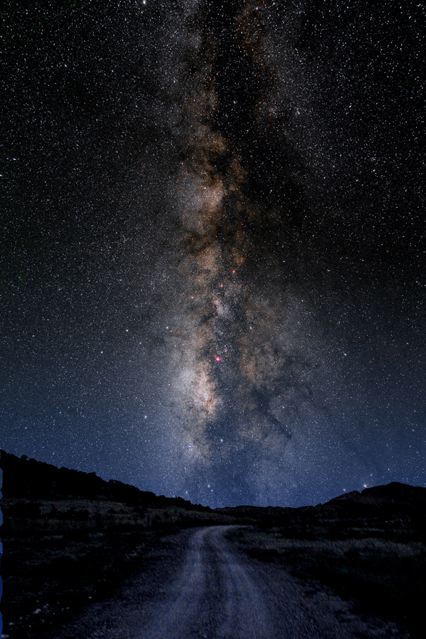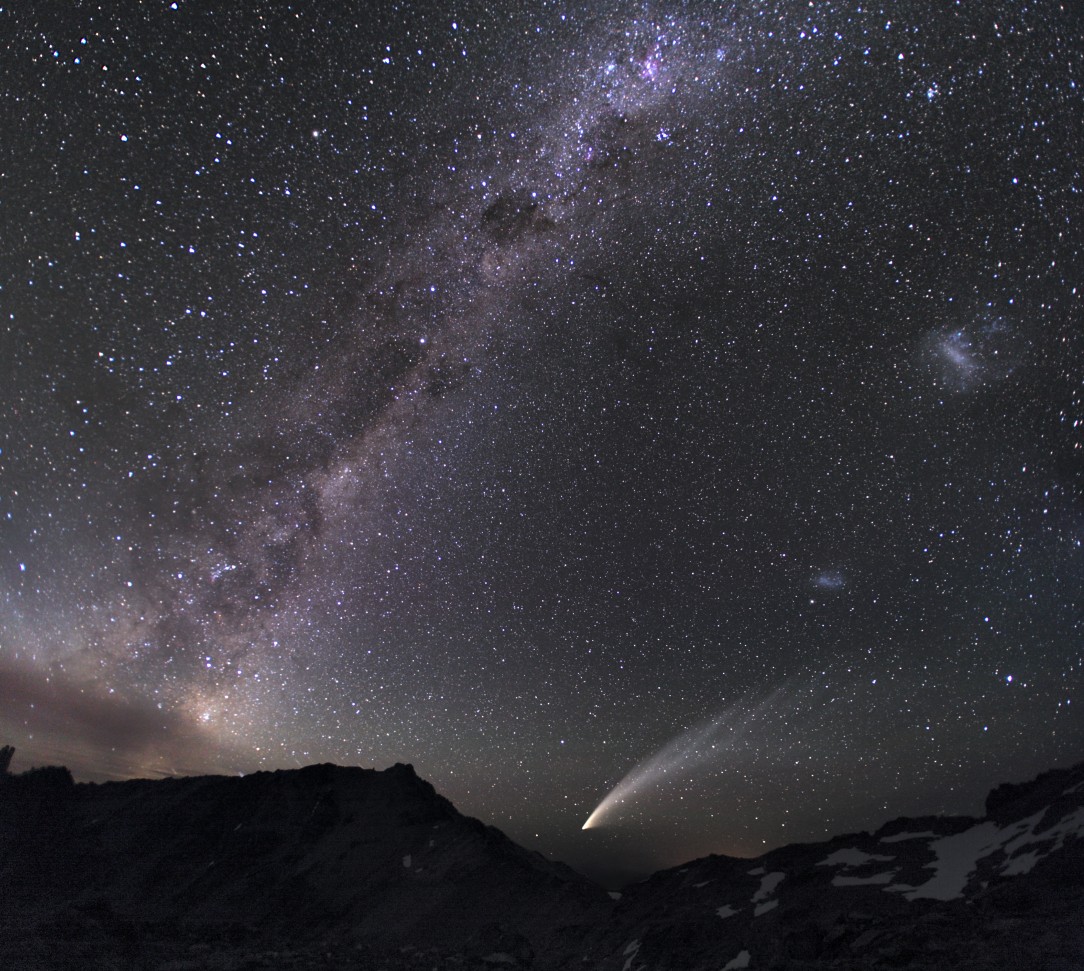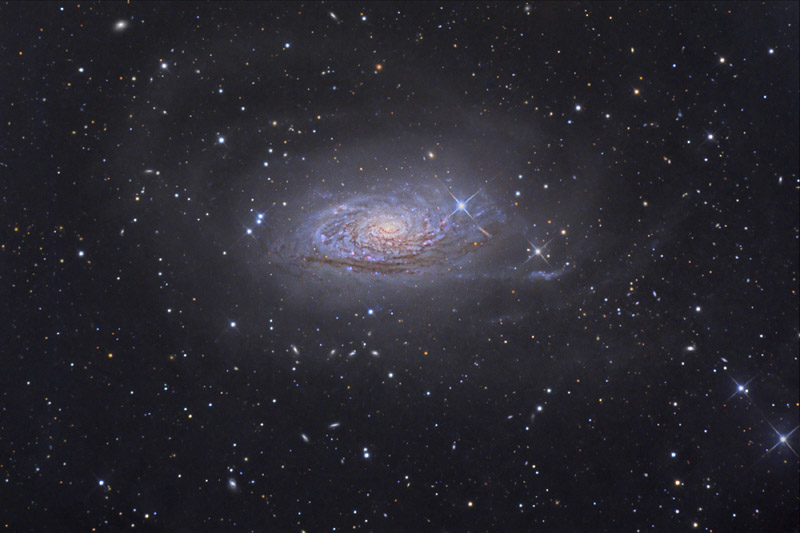
the milky way and andromeda galaxies dominate our local group. they dance around each other, spinning in circles around their shared gravitational center, while all the small galaxies cluster around the two big ones. slowly, the two massive spiral galaxies will shrink the distance between them, spiraling closer and closer, until they eventually become one galaxy. i say they are moving slowly because it will take them another 4 billion years or so to fully merge, but andromeda approaches the milky way at 300,000 km per hour!!!
our visual intuition of what a galaxy merger looks like is generally not what really happens. you see no massive fireworks that you might assume would occur when those billions of stars smash into each other. the thing is... stars nearly *never* come into violent contact! the distance between individual stars is so huge, that even though both andromeda and the milky way have hundreds of billions of stars each, it will be very unlikely that any two will get close enough to feel each others heat! just think that our sun's nearest stellar neighbor, alpha centauri, is 4 light years away! it takes *light* 4 years to travel to the closest star to our sun. thats *very* far away! even inside of densely packed globular clusters, star dont collide.
so if nothing explodes when galaxies collide, what do mergers look like? here are some examples of simulations that show the eventual merging of andromeda and the milky way. the merger will take place in about 4 billion years, so nothing to fear... don't worry! in fact, if humans were still around as that time approached, it would be fantastic because you could see the andromeda galaxy shining in the sky! you can see it now with the naked eye as a tiny little smudge... if you know where youre looking on a very clear night.
here's a quick video showing how the two massive galaxies will come together. the first time they go near each other, they pass thru each other like ghosts (no fireworks). gravitational forces dominate the interaction, drastically warping each galaxy.
this excerpt from a full program shows the collision in a bit more detail. the video clip describes the sloan digital sky survey during the first 4 minutes (this is where the galaxy zoo gets its millions of galaxies), and then shows visualizations of the milky way - andromeda collision starting around minute 4. they also show what the night sky might look like from earth's surface when the warped milky way disk and the beaming bright andromeda spiral dominate the view!
here's a scientific simulation produced by the N-Body Shop at the university of washington. props to them for displaying their very cool, physically motivated simulations on youtube for all to enjoy! this video shows how the milky way galaxy may have formed, with many small objects coming together under gravity's influence to form one galaxy.


















































